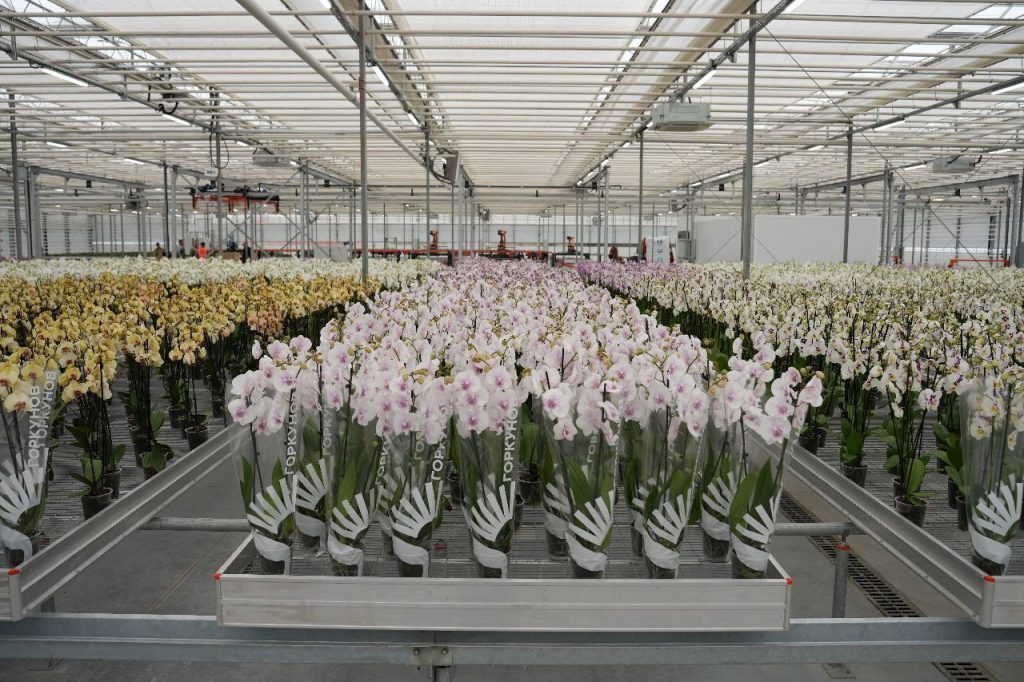
Russia is contemplating the implementation of restrictions on flower imports from Armenia due to pest-related concerns. The Federal Service Rosselkhoznadzor of Russia has announced the potential introduction of limitations on the importation of flowers from Armenia, effective June 16, 2025.
This decision arises in light of the fact that imports of cut flowers from Armenia totalled 52 million stems during the first half of 2025, representing an approximate 50% increase compared to the same period in the preceding year. Notably, 13 cases of western flower thrips (Frankliniella occidentalis) have been detected in floral shipments during this timeframe.
The agency has warned that, unless improvements are noted in this situation, it may impose a temporary ban on flowers that carry Armenian phytosanitary certificates, including those sourced from third countries.
In response, Armenia’s Food Safety Inspection Body has committed to conducting necessary inspections. Spokesperson Anush Arutyunyan has refuted certain claims made by the Russian agency related to imports from third countries, asserting that while minimal imports do occur, they are intended solely for domestic use.
She emphasized that the flowers exported to Russia are indeed cultivated in Armenia and that the country’s greenhouse production has increased sufficiently to meet export demands. Ongoing dialogue between the two agencies aims to ensure compliance with regional phytosanitary standards.

Russia blocks imports of over 60,000 flowers contaminated with quarantine pests
In a related development, Russia has recently halted the import of over 60,000 flowers found to be contaminated with quarantine pests. Between May 22 and June 2, 2025, Rosselkhoznadzor intercepted multiple shipments of imported flowers identified as contaminated with quarantine pests.
In the Amur Region, for instance, 16,000 infected stems were blocked at the Kani-Kurgan checkpoint, where western flower thrips (Frankliniella occidentalis) were discovered in a shipment of carnations, lisianthus, statice, and other varieties originating from China. Additionally, chrysanthemums are subject to current import restrictions.
In the Sverdlovsk Region, authorities in Yekaterinburg found that 65 stems of chrysanthemums from the Netherlands tested positive for chrysanthemum white rust (Puccinia horiana), leading to their destruction as part of a shipment totaling 100,600 stems from Lithuania.
In Sochi, 1,000 alstroemeria stems from Armenia were denied entry at Sochi Airport due to live western flower thrips.
Furthermore, in Primorsky Krai, more than 27,000 contaminated stems were discovered across three shipments from China, resulting in one batch being destroyed and the remainder scheduled for disposal by June 6. Thus far this year, 22 cases of western flower thrips have been identified in Chinese flower imports, impacting nearly 288,000 stems.
In the Chelyabinsk Region, 350 sunflower stems from a shipment of 98,000 from China also tested positive for thrips, and these flowers will undergo disinfection.
Russia’s flower industry seeks state support to reduce import dependence
In addition, Russia’s flower industry is also actively seeking government assistance to mitigate its reliance on imports. Despite previous commitments and rising costs associated with imports, the country’s flower market remains predominantly dependent on foreign suppliers. According to data from Rosstat, the average price of a single cut flower has increased by nearly 20% over the past year.
Presently, imports account for approximately 80% of the flowers sold in the Russian market. The industry asserts that to reduce this figure even modestly, it would need to double its production capacity by establishing over 400 hectares of greenhouses by the year 2030. However, the progression of business initiatives is currently hindered by a lack of government support.
While interest in domestic flower cultivation has intensified, particularly in response to the logistical challenges associated with imported goods resulting from sanctions, the costs related to constructing or upgrading greenhouse facilities remain prohibitively high.
New constructions can reach expenses of up to 350 million rubles per hectare, and while renovations are less costly, they do not currently benefit from state incentives.
Producers are withholding nearly 150 hectares of potential greenhouse land, uncertain about whether support for upgrades will be provided. Existing producers remain in a state of ambiguity, as subsidies are exclusively allocated to new constructions.
Although floriculture output has increased by more than 50% over the past five years, Russia continues to rely on imports from Ecuador, Kenya, Colombia, and Europe.
In 2024, domestic production of cut flowers and buds reached 436.8 million, which represents a 3–5% increase compared to the prior year. Roses constitute the predominant segment of this production, followed by tulips, chrysanthemums, gerberas, lilies, and seedling flowers.
The Ministry of Agriculture is currently “considering” the provision of assistance for upgrades; however, no specific timelines or guarantees have been disclosed.
Concurrently, the industry is endeavouring to localize equipment production. Despite many greenhouses adhering to global standards, reliance on Western technology remains significant. There is a gradual transition toward utilizing Russian or Chinese equipment, yet this process is slower than necessary and, in certain instances, still lacks essential capabilities.
One ongoing challenge pertains to plant breeding, as the majority of flower planting materials continue to be imported.
